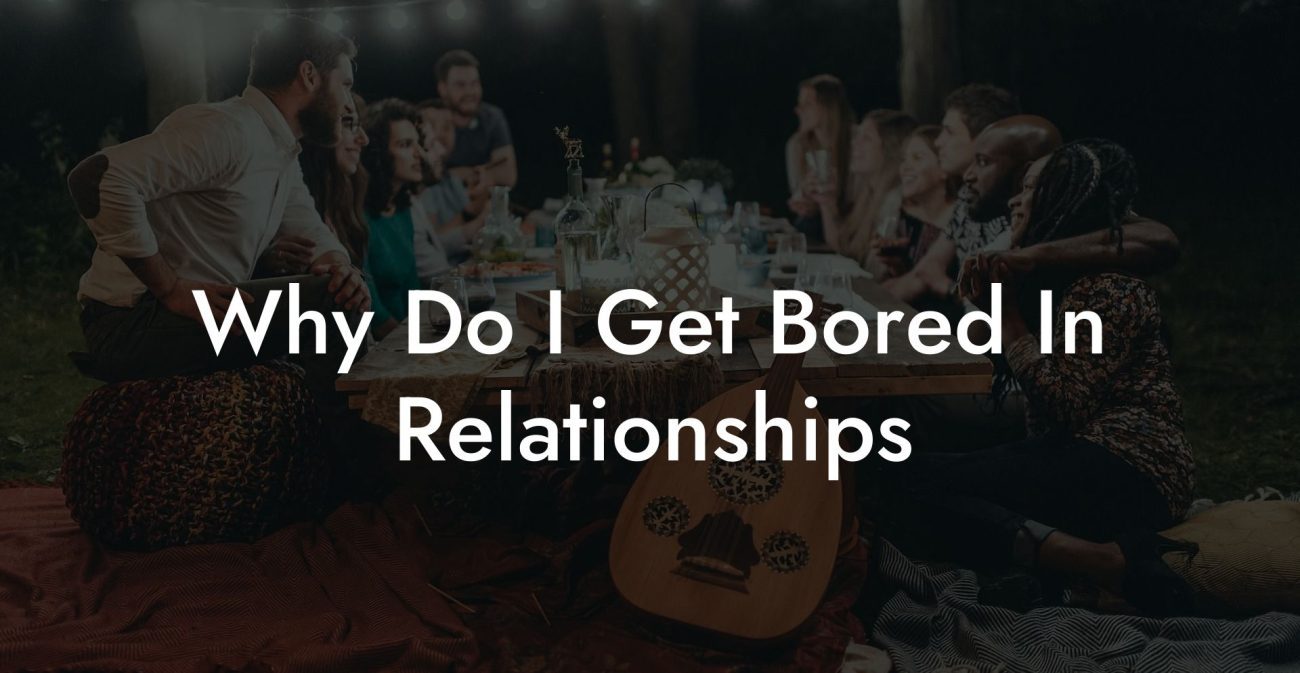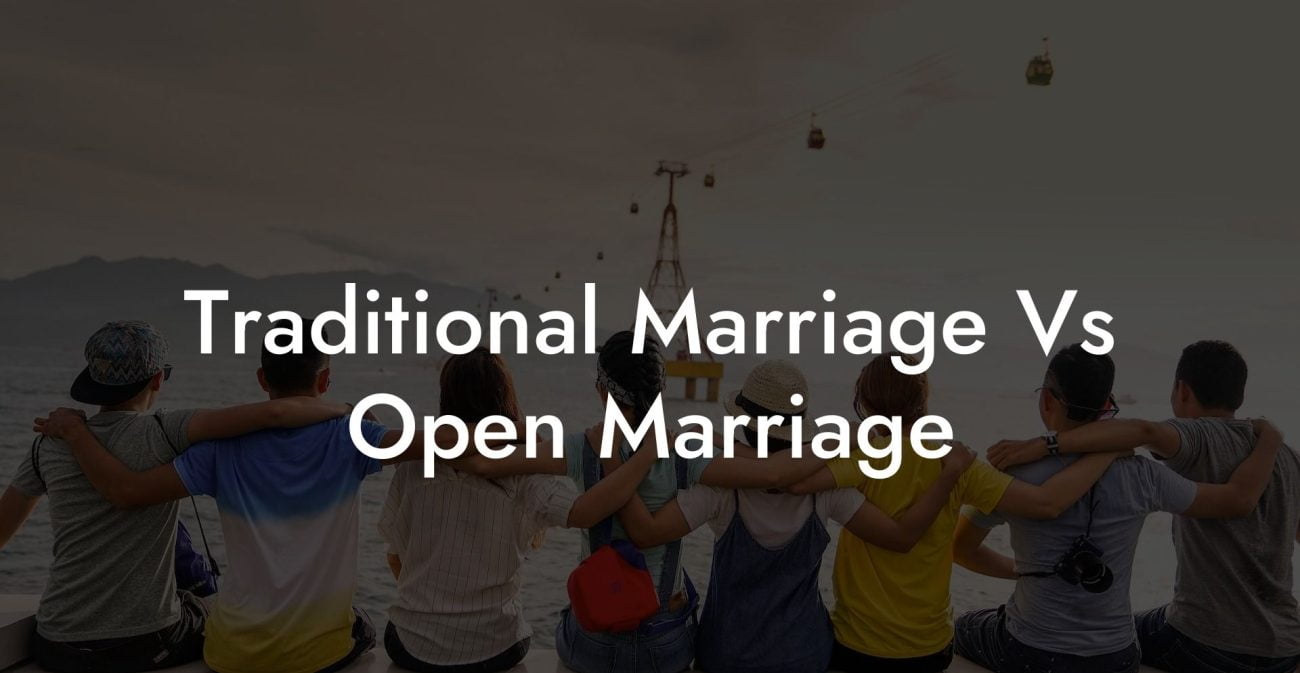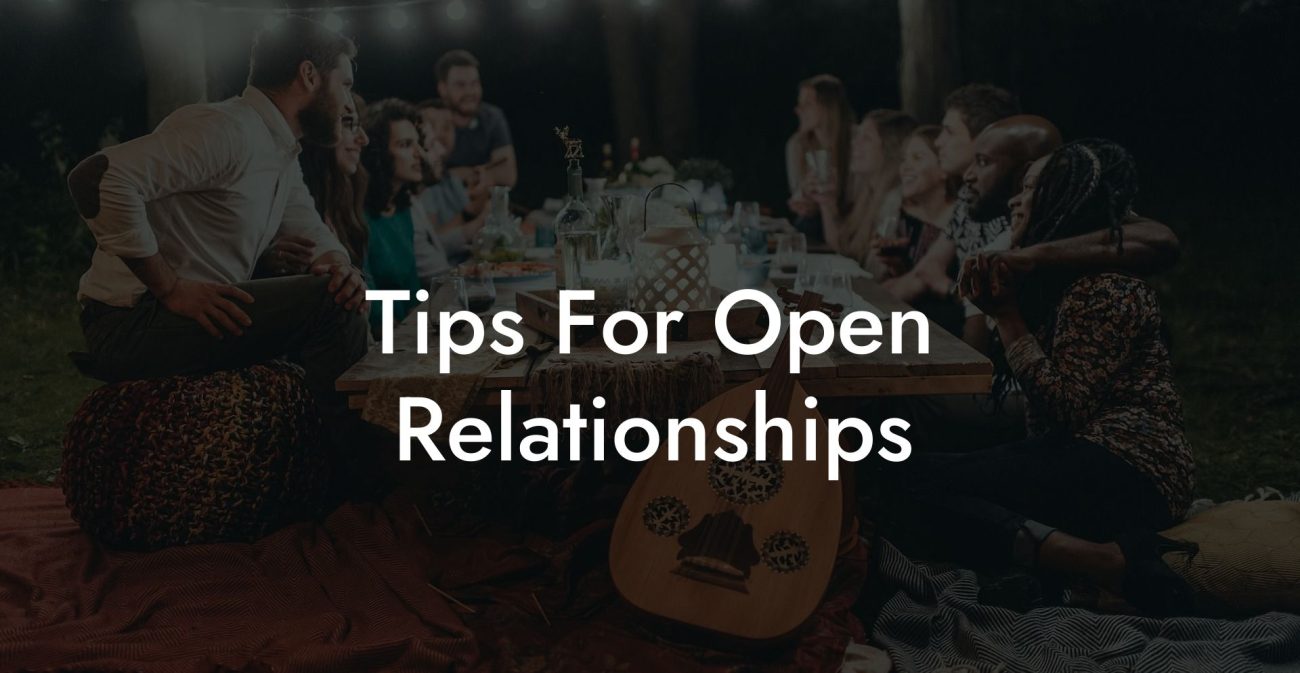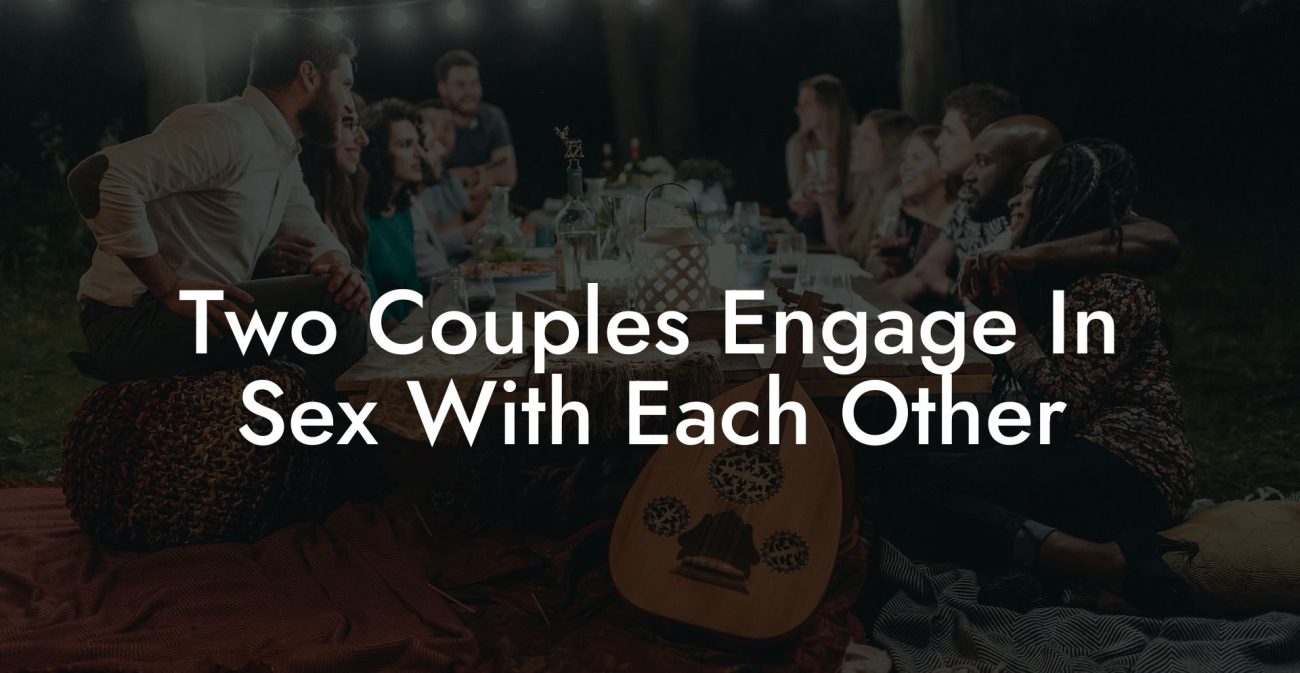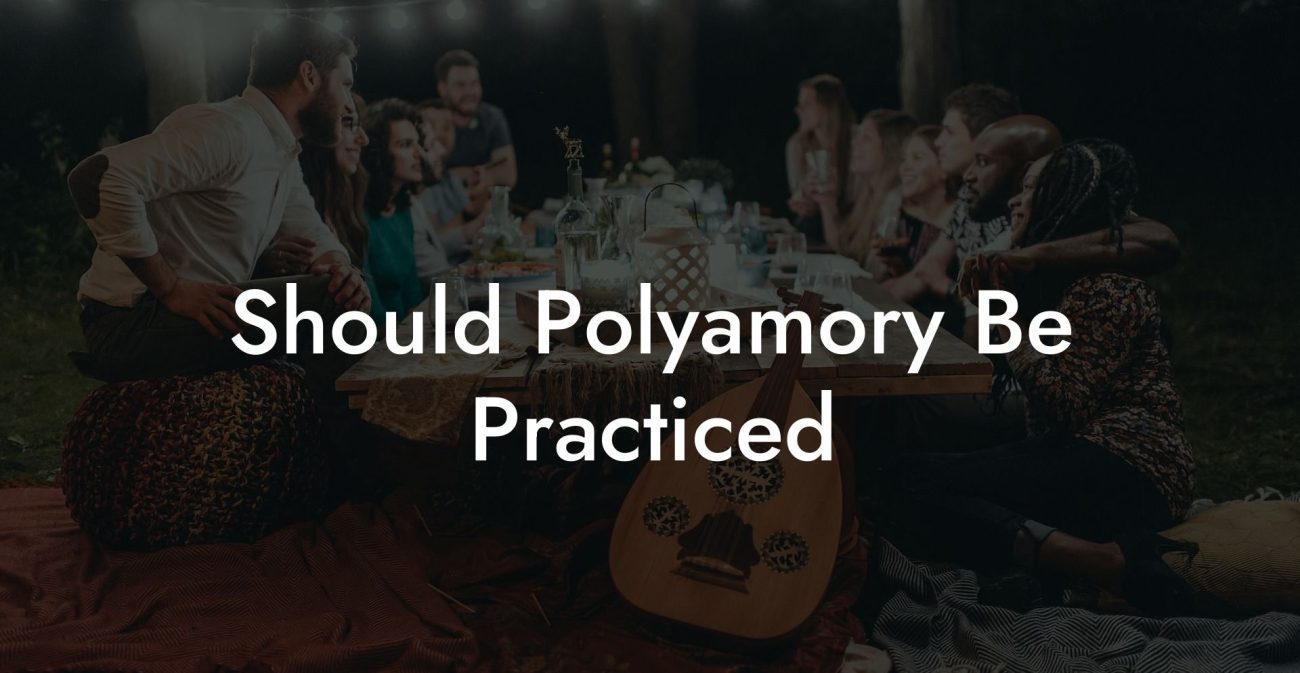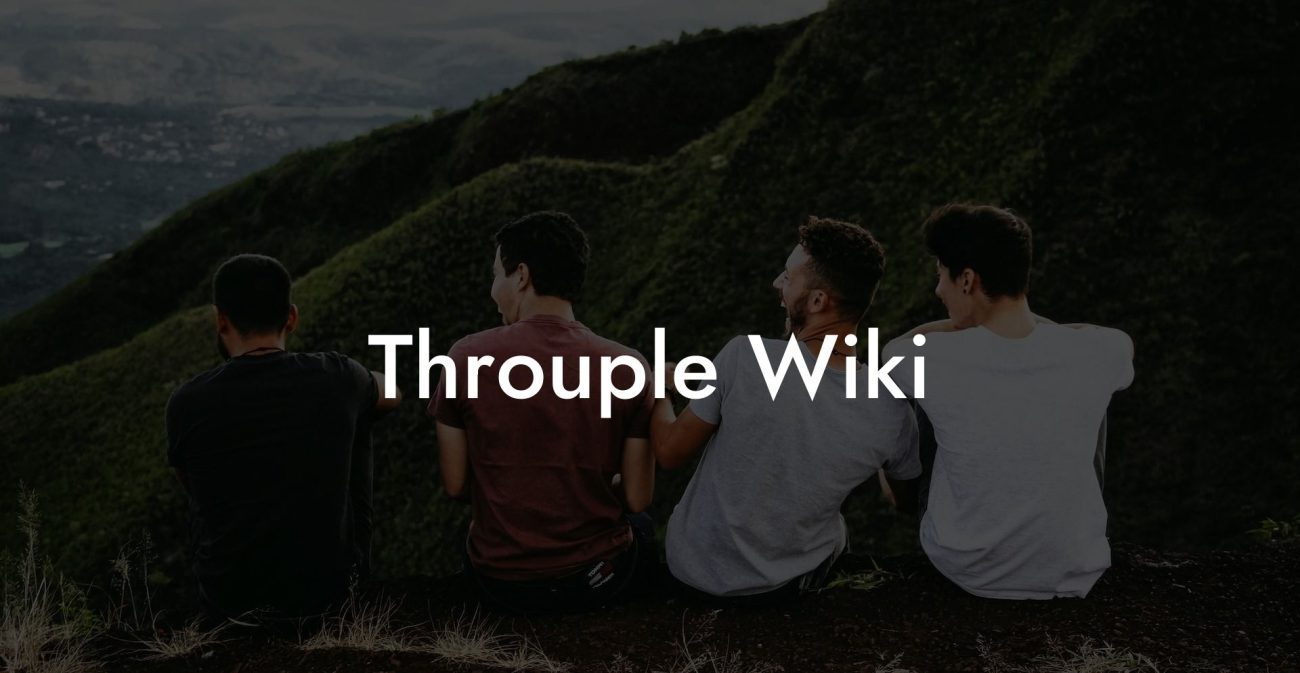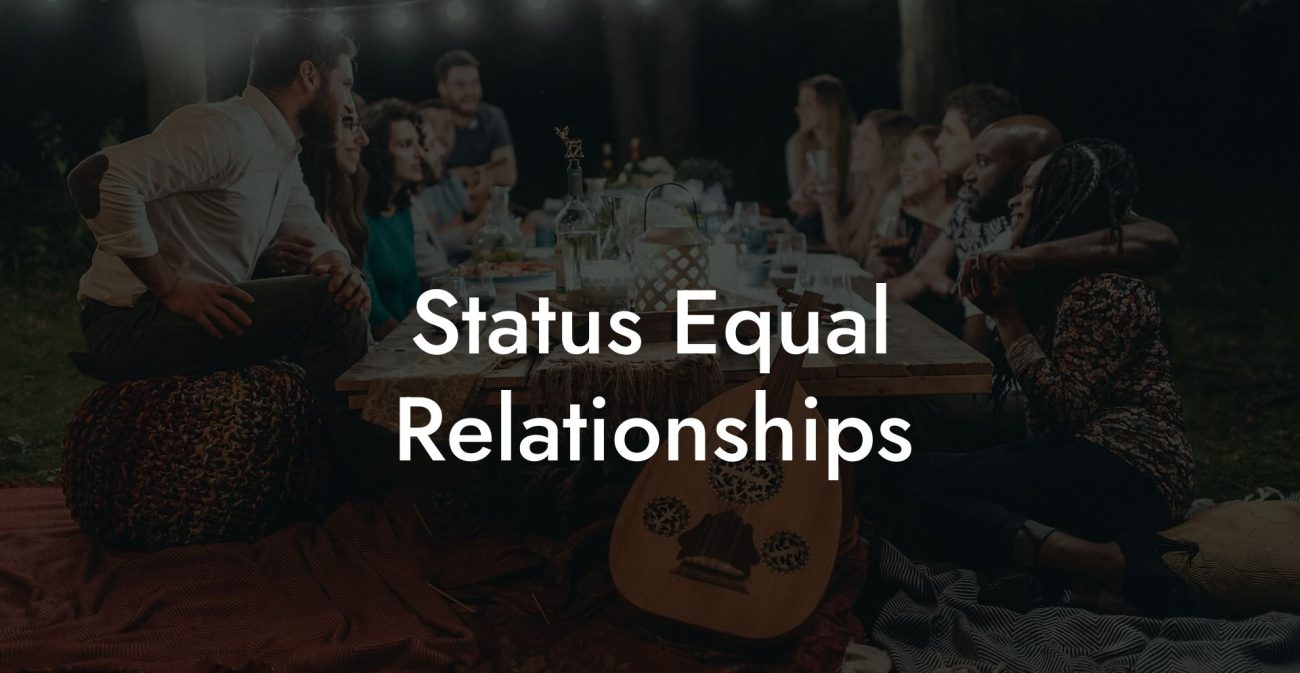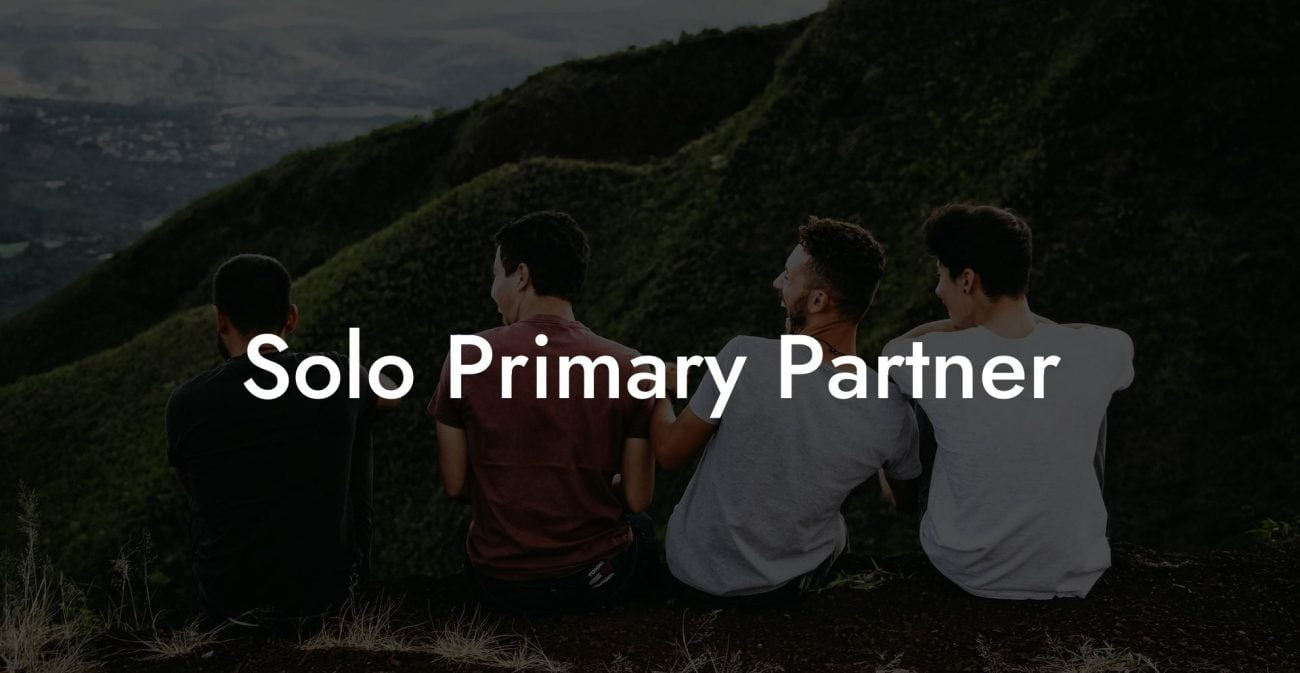What Is a Hotwife?
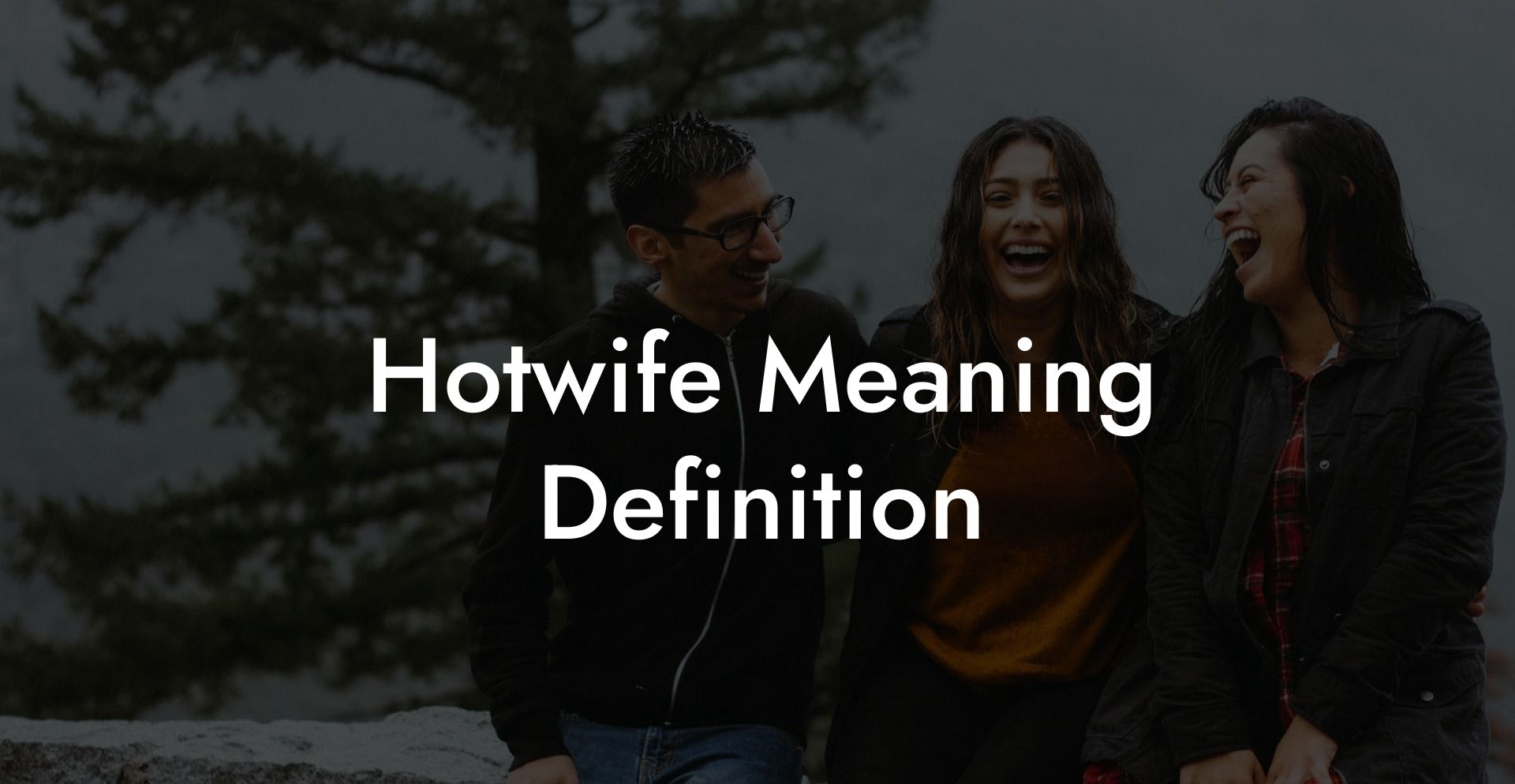
In today's evolving world of consensual non-monogamy and alternative relationship models, the term "hotwife" has gained significant attention. Whether you're curious about this lifestyle, exploring ways to enhance your own relationship, or simply seeking to understand the cultural and social nuances behind the term, this guide provides an in-depth look at the meaning, origins, dynamics, benefits, challenges, and practical considerations associated with hotwife relationships.
Quick Links to Useful Sections
- Understanding the Term "Hotwife"
- Definition and Overview
- Historical and Cultural Context
- Origins of the Hotwife Concept
- Cultural Significance in the 21st Century
- Core Principles and Dynamics of Hotwife Relationships
- Mutual Consent and Communication
- Emotional Dynamics and Trust
- Balancing Individual Desires with Relationship Stability
- Comparing Hotwife Dynamics with Other Relationship Models
- Hotwife vs. Cuckold
- Hotwife vs. Swinging
- Benefits of the Hotwife Lifestyle
- Empowerment and Sexual Liberation
- Strengthening the Primary Relationship
- Increased Sexual Variety and Excitement
- Challenges and Considerations
- Emotional Management
- Setting and Maintaining Boundaries
- Social Stigma and Misunderstanding
- Practical Strategies for Success
- Enhance Communication
- Establish Clear Boundaries
- Foster Emotional Intimacy Within the Primary Relationship
- Seek Professional Guidance When Needed
- Frequently Asked Questions (FAQ)
Understanding the Term "Hotwife"
Definition and Overview
The term "hotwife" generally refers to a woman who is in a committed relationship, often married, and who engages in sexual relationships with other men with the full knowledge and often the encouragement of her primary partner. This arrangement is a form of consensual non-monogamy that is distinct from infidelity because it is based on open communication, mutual consent, and clearly defined boundaries.
In a hotwife dynamic, the primary relationship is maintained as the central emotional bond, while the hotwife enjoys the freedom to explore sexual experiences outside of that relationship. This can be a source of excitement and fulfillment for both partners when managed with transparency and respect. The term also carries connotations of sexual confidence and attractiveness, emphasizing the woman's appeal as a key component of the dynamic.
Historical and Cultural Context
Origins of the Hotwife Concept
Although the term "hotwife" is relatively modern, the concept of a woman with sexual freedom in a committed relationship has historical precedents. Throughout history, various cultures have recognized forms of non-monogamy where a woman's attractiveness and sexual freedom were seen as a source of status, power, or economic advantage. In many ancient societies, relationships were structured in ways that allowed for multiple partnerships, often as a means of ensuring fertility, building alliances, or managing household responsibilities.
In modern times, the hotwife concept emerged as part of the broader sexual revolution of the 1960s and 1970s, when traditional notions of sexuality and relationship exclusivity were increasingly questioned. As discussions about sexual liberation, feminist ideals, and alternative lifestyles grew in public discourse, hotwifing became a way for some couples to redefine intimacy and trust within the bounds of a committed relationship.
Cultural Significance in the 21st Century
Today, the hotwife lifestyle is often embraced by individuals and couples who value both emotional security and sexual exploration. The term has gained popularity in online communities, podcasts, and literature about consensual non-monogamy. For many, it represents empowerment and a celebration of female sexuality, allowing women to take control of their sexual desires while still honoring their commitments.
Cultural acceptance varies widely, however, and while some communities view the hotwife dynamic as liberating, others may still stigmatize it due to lingering traditional views on fidelity and gender roles. Increased visibility and open dialogue are gradually shifting perceptions, leading to broader acceptance and understanding.
Core Principles and Dynamics of Hotwife Relationships
Mutual Consent and Communication
The foundation of any healthy hotwife arrangement is mutual consent. Both partners must fully agree to the dynamic, with open, honest communication about desires, boundaries, and expectations. The primary partner typically plays a supportive role by encouraging and sometimes even facilitating the hotwife's exploration of sexual experiences with others.
- Transparency: All parties are aware of the arrangements and any external encounters.
- Communication: Regular discussions help ensure that feelings such as jealousy or insecurity are addressed promptly and constructively.
- Consent: The hotwife’s autonomy is respected, and her decisions regarding external encounters are made freely and without coercion.
Emotional Dynamics and Trust
Trust is a critical component in hotwife relationships. The primary partner must trust that the hotwife’s external encounters will not undermine the core emotional connection. At the same time, the hotwife trusts that her primary partner supports her autonomy and desires. This delicate balance is maintained through:
- Regular Check-Ins: Scheduled conversations about the arrangement and its impact on the relationship.
- Emotional Reassurance: Both partners work to ensure that the primary bond remains strong, often through quality time together and shared experiences.
- Mutual Empowerment: The arrangement is seen as a way to empower both partners, enhancing sexual fulfillment for the hotwife while affirming the primary partner’s trust and commitment.
Balancing Individual Desires with Relationship Stability
One of the challenges in a hotwife dynamic is balancing the excitement of external encounters with the stability of the primary relationship. The goal is to ensure that exploration does not lead to neglect of the central bond. This balance can be achieved by:
- Clear Scheduling: Allocating dedicated time for the primary relationship as well as for external encounters.
- Setting Boundaries: Clearly defined rules about what is acceptable in terms of frequency, types of encounters, and emotional involvement.
- Regular Reflection: Both partners periodically reassess the arrangement to ensure it still meets their needs and make adjustments as necessary.
Comparing Hotwife Dynamics with Other Relationship Models
Hotwife vs. Cuckold
While the hotwife dynamic and cuckoldry are often discussed together, they are not the same. In a hotwife arrangement, the focus is on empowering the woman to explore her sexuality with the support and encouragement of her primary partner. In contrast, cuckoldry typically involves the primary partner (often the husband) deriving a sense of arousal or satisfaction from watching his wife engage sexually with other men, sometimes with an element of humiliation or submission.
The hotwife model is generally characterized by mutual empowerment and respect, with the primary focus on the hotwife’s sexual freedom and personal fulfillment.
Hotwife vs. Swinging
Swinging is another form of consensual non-monogamy where couples engage in sexual activities with other couples or individuals, usually in a social setting. Unlike hotwifing, swinging is generally more about group sexual encounters and recreational sex rather than focusing on a specific dynamic where the hotwife's exploration is a central, ongoing element of the relationship.
While both models allow for external sexual experiences, hotwifing often involves a more personalized, ongoing arrangement that centers on the primary partner's support of the hotwife’s sexual autonomy.
Benefits of the Hotwife Lifestyle
Empowerment and Sexual Liberation
One of the most significant benefits of the hotwife lifestyle is the empowerment it offers to women. It celebrates female sexuality and encourages women to explore their desires freely and confidently, with the support of their primary partner.
- Personal Fulfillment: Hotwifing allows women to experience sexual freedom and variety, leading to greater self-awareness and satisfaction.
- Empowerment: The dynamic reinforces the idea that a woman’s sexual choices are her own and that these choices can enhance her sense of self-worth and autonomy.
Strengthening the Primary Relationship
For many couples, the hotwife dynamic can actually reinforce the primary relationship. By embracing an open, honest arrangement, partners build a foundation of trust and transparency. The primary partner’s support can lead to deeper emotional intimacy and mutual respect.
- Enhanced Trust: The arrangement requires ongoing communication and trust-building, which can strengthen the core bond.
- Emotional Reassurance: Knowing that both partners are invested in maintaining the primary relationship can provide a sense of security and stability.
Increased Sexual Variety and Excitement
The opportunity for sexual exploration can add excitement to the relationship. Hotwifing allows couples to experience a range of sexual encounters, which can help keep the spark alive and prevent feelings of stagnation.
- Diverse Experiences: The hotwife dynamic offers access to a variety of sexual experiences that can enhance physical intimacy.
- Renewed Passion: Exploring new sexual avenues can reignite passion and lead to a more adventurous, fulfilling sex life.
Challenges and Considerations
Emotional Management
Like any non-traditional relationship model, the hotwife dynamic comes with its challenges. One of the most common issues is managing emotions such as jealousy and insecurity. Both partners need to work proactively to address these feelings and ensure that they do not undermine the primary bond.
- Regular Dialogue: Ongoing, honest discussions about emotions are crucial to maintaining balance.
- Therapeutic Support: In some cases, couples therapy or individual counseling can help manage complex emotions.
Setting and Maintaining Boundaries
Establishing clear boundaries is essential to prevent misunderstandings and ensure that all parties feel secure. Both partners must agree on the rules governing external encounters.
- Defined Guidelines: Clearly outline what types of interactions are acceptable, the frequency of encounters, and the level of emotional involvement allowed.
- Ongoing Negotiation: Boundaries may need to be revisited and adjusted over time as the relationship evolves.
Social Stigma and Misunderstanding
Despite growing acceptance of non-monogamous lifestyles, the hotwife dynamic can still be met with social stigma or misunderstanding. Couples may face judgment from friends, family, or society at large.
- Community Support: Connecting with like-minded individuals through online forums and local groups can help mitigate feelings of isolation.
- Educate and Advocate: Sharing accurate information and personal experiences can help challenge stereotypes and reduce stigma.
Practical Strategies for Success
Enhance Communication
Communication is the cornerstone of any successful hotwife arrangement. Consider these practical tips:
- Regular Check-Ins: Schedule dedicated time for one-on-one or group conversations to discuss feelings, boundaries, and updates.
- Use “I” Statements: Express your feelings and needs in a way that focuses on your personal experience rather than placing blame.
- Active Listening: Ensure that each partner feels heard by practicing active listening and validating their emotions.
Establish Clear Boundaries
Define and document your boundaries regarding external encounters. A written agreement or a set of guidelines can be a useful reference for both partners.
- Discuss Expectations: Clearly articulate what each partner expects from external encounters and the role these experiences play in your relationship.
- Review Regularly: Revisit your boundaries periodically to adjust them based on your evolving needs and experiences.
Foster Emotional Intimacy Within the Primary Relationship
Strengthening your primary bond is key to making the hotwife dynamic work effectively. Invest time and energy in nurturing your emotional connection.
- Date Nights: Regularly schedule quality time together to maintain the spark and reinforce your bond.
- Shared Experiences: Engage in activities that build mutual memories and deepen your emotional connection.
- Express Appreciation: Make a habit of acknowledging and appreciating each other’s efforts and qualities.
Seek Professional Guidance When Needed
If you encounter persistent challenges or emotional difficulties, consider seeking the help of a therapist who specializes in consensual non-monogamy. Professional guidance can provide tools for effective communication, conflict resolution, and emotional management.
- Couples Therapy: Working with a therapist can help both partners address any insecurities or conflicts that arise.
- Individual Counseling: Personal therapy can provide support for managing stress, building self-esteem, and fostering personal growth.
Frequently Asked Questions (FAQ)
1. What does the term "hotwife" mean?
The term "hotwife" refers to a woman who is in a committed relationship, often married, and who engages in sexual relationships with other men with the full knowledge and consent of her primary partner. It is associated with empowerment, sexual freedom, and a dynamic that emphasizes both personal exploration and mutual trust.
2. How does a hotwife arrangement work?
In a hotwife arrangement, the primary relationship remains the core of emotional support and commitment. The hotwife is given the freedom to explore external sexual encounters, often with the encouragement and support of her partner, who may derive arousal or satisfaction from the dynamic.
3. What are the benefits of the hotwife dynamic?
Benefits include increased sexual variety, personal empowerment for the hotwife, enhanced trust and communication in the primary relationship, and the opportunity for both partners to explore their desires in a consensual and supportive environment.
4. What challenges might arise in a hotwife relationship?
Challenges can include managing jealousy and insecurity, setting and maintaining clear boundaries, and dealing with potential social stigma. Ongoing communication and regular check-ins are critical to overcoming these challenges.
5. How is the hotwife dynamic different from swinging or cuckolding?
While swinging generally involves couples engaging in group sexual activities and cuckolding focuses on the arousal derived from watching a partner have sex with others, the hotwife dynamic centers on empowering a woman to explore her sexuality with other partners, with the full support and encouragement of her primary partner.
6. Where can I find more information on hotwife dynamics?
Additional resources include books like "The Ethical Slut" by Dossie Easton & Janet Hardy, online forums, and podcasts such as "Multiamory" that discuss various aspects of consensual non-monogamy and hotwife lifestyles.
Resources and Community Support: Your Next Steps
- "The Ethical Slut" by Dossie Easton & Janet Hardy – A foundational text that explores ethical non-monogamy and provides insights into various alternative relationship models, including the hotwife dynamic.
- Podcasts: Listen to "Multiamory" and similar shows to hear real-life experiences and expert discussions on hotwife lifestyles and consensual non-monogamy.
- Online Communities: Join forums and social media groups such as r/polyamory where you can exchange ideas and receive support from like-minded individuals.
- Workshops and Webinars: Attend events focused on relationship psychology and ethical non-monogamy to expand your understanding and connect with others.
By exploring these resources and applying the strategies outlined in this guide, you can develop a clear, informed understanding of what the hotwife dynamic means and how it can empower you and your partner to build a fulfilling, exciting, and respectful relationship. Embrace open dialogue, continuous learning, and self-reflection as you explore this unique approach to sexual freedom and relationship empowerment.
Lost & confused by all of the terms, types and seemingly made up 3 letter acronyms?? We've got you. Check out our Ethnical Non-Monogamy Dictionary >>
Useful Interruption: Not sure which relationship vibe fits you best? Take our Relationship Test, it’ll give you the real insight into your natural relationship style. Then, dive into our binge-worthy guides (from the tried-and-true to the “wait, that’s a thing?”) and find the perfect relationship type for your life:
- Monogamy
- Open Relationships
- Ethical Non-Monogamy
- Solo Polyamory
- Non-Hierarchical Polyamory
- Hierarchical Polyamory
- Relationship Anarchy
- Swinging
Now back to the main article but yeah take the test...


